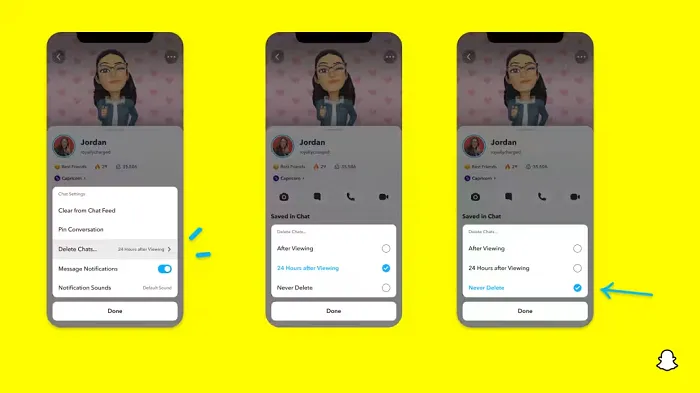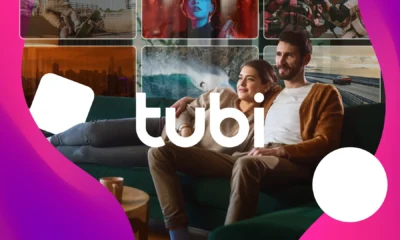SOCIAL
Twitter Publishes New Guide on What Consumers Expect from Brands via Tweet

Twitter has published a new report which looks at how brands can maximize their success on the platform, based on evolving consumer trends and expectations in the app.
Called #RealTalk, the guide is the result of analyzing a decade worth of brand tweets, and user tweets about brands, along with numerous consumer surveys, in order to get a real view on what works in modern Twitter marketing, and what Twitter users both respond to and expect.
There’s a heap to take in – you can download the full, 50-page guide here, but in this post, we’ll take a look at some of the highlights.
First off, Twitter notes that the brand conversation is rising on Twitter, with more people looking to engage with brands in the app.
That presents significant opportunity for awareness and connection, and the platform has become an even more important connective tool amid the pandemic. This highlights the need for brands to get their messaging right, and as times and issues change, so too are consumer expectations about a brand’s Twitter presence.

Consumers want brands to communicate authentically, and honestly, in order to provide valuable, real-time updates via tweet. But the key problem highlighted in the report is that years of best practice guides and tips have now lead to a new issue – all brand profiles on Twitter are starting to sound the same.

That’s not overly surprising – every time there’s a viral tweet sensation or resonant event tie-in, brand Twitter goes crazy in its praise, while analysis of top tweet trends, which seek to condense best practice guides down into actionable tips – i.e. amount of hashtags to include, ideal character length or tweets – discount uniqueness and variation in favor of broad analysis. Which may provide some valuable guide notes, but a side effect is that when everyone is following the same playbook, everything starts to feel similar.
Based on this Twitter advises that brands need to evolve their messaging, and ensure that they’re connecting with their audiences based on the times, and what’s happening in the world.

Even more specific, Twitter also outlines the kinds of events that people want to see brands tweet about, or not, helping to guide your approach on each.

Basically, no one cares about a business’ opinion on the latest episode of The Mandalorian, no matter how on-brand it might be.
Of course, as with the above note on general advice, this is based on broad tweet analysis, and within that, nuance can get missed, and there could well be a brand that ignores all of these guides and does the complete opposite, yet still sees success. The key lies in knowing your target audience, and what they expect. And really, that’s the key message of Twitter’s overall guide, that while general advice can be helpful, you need to stick with your brand messaging, and voice, to truly win out.

Which reminds me of the ‘Five Whys’ theory, which aims to help brands identify their purpose, in order to then better define their messaging, by prompting them to dig into the core purpose of what they do.
As outlined by the Harvard Business Review, the ‘Five Whys’ are answers to a question posed to your business. You start with a statement – either ‘We make X products‘ or ‘We provide X services‘ – then you ask ‘Why is that important?‘ and you provide five consecutive answers to each subsequent response. As you go through those answers, you’ll end up moving closer to truly understanding your businesses’ actual purpose, which you can then narrow down to a singular statement, enabling you to unify your company activities to work towards that goal.
From the HBR report:
“The five whys can help companies in any industry frame their work in a more meaningful way. An asphalt and gravel company might begin by saying, We make gravel and asphalt products. After a few whys, it could conclude that making asphalt and gravel is important because the quality of the infrastructure plays a vital role in people’s safety and experience; because driving on a pitted road is annoying and dangerous; because 747s cannot land safely on runways with poor workmanship or inferior concrete; because buildings with substandard weaken with time and crumble in earthquakes. From such introspection may emerge this purpose: To make people’s lives better by improving the quality of man-made structures.”
That’s similar in approach to Twitter’s brand voice notes above, going deeper into not only how you communicate, but why, and what you’re aiming to share with your audience with each tweet. Establishing these key elements can go a long way in defining your brand voice, and distinguishing your business from every other – which, as Twitter notes, is increasingly important based on user feedback.
It’s a good guide – not hugely in-depth on each step, but providing relevant, actionable pointers for real branding via tweet, and connecting with users based on your key focus areas.
Because while having a lot of followers may look good, and may feel important, having fewer followers who are actually likely to buy from your business is potentially far more valuable. And you do that by establishing brand voice, brand purpose, and how you connect with your target market.
Worth considering in your approach.
SOCIAL
Snapchat Explores New Messaging Retention Feature: A Game-Changer or Risky Move?

In a recent announcement, Snapchat revealed a groundbreaking update that challenges its traditional design ethos. The platform is experimenting with an option that allows users to defy the 24-hour auto-delete rule, a feature synonymous with Snapchat’s ephemeral messaging model.
The proposed change aims to introduce a “Never delete” option in messaging retention settings, aligning Snapchat more closely with conventional messaging apps. While this move may blur Snapchat’s distinctive selling point, Snap appears convinced of its necessity.
According to Snap, the decision stems from user feedback and a commitment to innovation based on user needs. The company aims to provide greater flexibility and control over conversations, catering to the preferences of its community.
Currently undergoing trials in select markets, the new feature empowers users to adjust retention settings on a conversation-by-conversation basis. Flexibility remains paramount, with participants able to modify settings within chats and receive in-chat notifications to ensure transparency.
Snapchat underscores that the default auto-delete feature will persist, reinforcing its design philosophy centered on ephemerality. However, with the app gaining traction as a primary messaging platform, the option offers users a means to preserve longer chat histories.
The update marks a pivotal moment for Snapchat, renowned for its disappearing message premise, especially popular among younger demographics. Retaining this focus has been pivotal to Snapchat’s identity, but the shift suggests a broader strategy aimed at diversifying its user base.
This strategy may appeal particularly to older demographics, potentially extending Snapchat’s relevance as users age. By emulating features of conventional messaging platforms, Snapchat seeks to enhance its appeal and broaden its reach.
Yet, the introduction of message retention poses questions about Snapchat’s uniqueness. While addressing user demands, the risk of diluting Snapchat’s distinctiveness looms large.
As Snapchat ventures into uncharted territory, the outcome of this experiment remains uncertain. Will message retention propel Snapchat to new heights, or will it compromise the platform’s uniqueness?
Only time will tell.
SOCIAL
Catering to specific audience boosts your business, says accountant turned coach

While it is tempting to try to appeal to a broad audience, the founder of alcohol-free coaching service Just the Tonic, Sandra Parker, believes the best thing you can do for your business is focus on your niche. Here’s how she did just that.
When running a business, reaching out to as many clients as possible can be tempting. But it also risks making your marketing “too generic,” warns Sandra Parker, the founder of Just The Tonic Coaching.
“From the very start of my business, I knew exactly who I could help and who I couldn’t,” Parker told My Biggest Lessons.
Parker struggled with alcohol dependence as a young professional. Today, her business targets high-achieving individuals who face challenges similar to those she had early in her career.
“I understand their frustrations, I understand their fears, and I understand their coping mechanisms and the stories they’re telling themselves,” Parker said. “Because of that, I’m able to market very effectively, to speak in a language that they understand, and am able to reach them.”Â
“I believe that it’s really important that you know exactly who your customer or your client is, and you target them, and you resist the temptation to make your marketing too generic to try and reach everyone,” she explained.
“If you speak specifically to your target clients, you will reach them, and I believe that’s the way that you’re going to be more successful.
Watch the video for more of Sandra Parker’s biggest lessons.
SOCIAL
Instagram Tests Live-Stream Games to Enhance Engagement

Instagram’s testing out some new options to help spice up your live-streams in the app, with some live broadcasters now able to select a game that they can play with viewers in-stream.
As you can see in these example screens, posted by Ahmed Ghanem, some creators now have the option to play either “This or That”, a question and answer prompt that you can share with your viewers, or “Trivia”, to generate more engagement within your IG live-streams.
That could be a simple way to spark more conversation and interaction, which could then lead into further engagement opportunities from your live audience.
Meta’s been exploring more ways to make live-streaming a bigger consideration for IG creators, with a view to live-streams potentially catching on with more users.
That includes the gradual expansion of its “Stars” live-stream donation program, giving more creators in more regions a means to accept donations from live-stream viewers, while back in December, Instagram also added some new options to make it easier to go live using third-party tools via desktop PCs.
Live streaming has been a major shift in China, where shopping live-streams, in particular, have led to massive opportunities for streaming platforms. They haven’t caught on in the same way in Western regions, but as TikTok and YouTube look to push live-stream adoption, there is still a chance that they will become a much bigger element in future.
Which is why IG is also trying to stay in touch, and add more ways for its creators to engage via streams. Live-stream games is another element within this, which could make this a better community-building, and potentially sales-driving option.
We’ve asked Instagram for more information on this test, and we’ll update this post if/when we hear back.
-

 PPC4 days ago
PPC4 days ago19 Best SEO Tools in 2024 (For Every Use Case)
-

 MARKETING7 days ago
MARKETING7 days agoWill Google Buy HubSpot? | Content Marketing Institute
-
SEARCHENGINES7 days ago
Daily Search Forum Recap: April 16, 2024
-

 SEO6 days ago
SEO6 days agoGoogle Clarifies Vacation Rental Structured Data
-

 MARKETING6 days ago
MARKETING6 days agoStreamlining Processes for Increased Efficiency and Results
-
SEARCHENGINES5 days ago
Daily Search Forum Recap: April 17, 2024
-

 PPC7 days ago
PPC7 days agoHow to Collect & Use Customer Data the Right (& Ethical) Way
-

 SEO6 days ago
SEO6 days agoAn In-Depth Guide And Best Practices For Mobile SEO














You must be logged in to post a comment Login